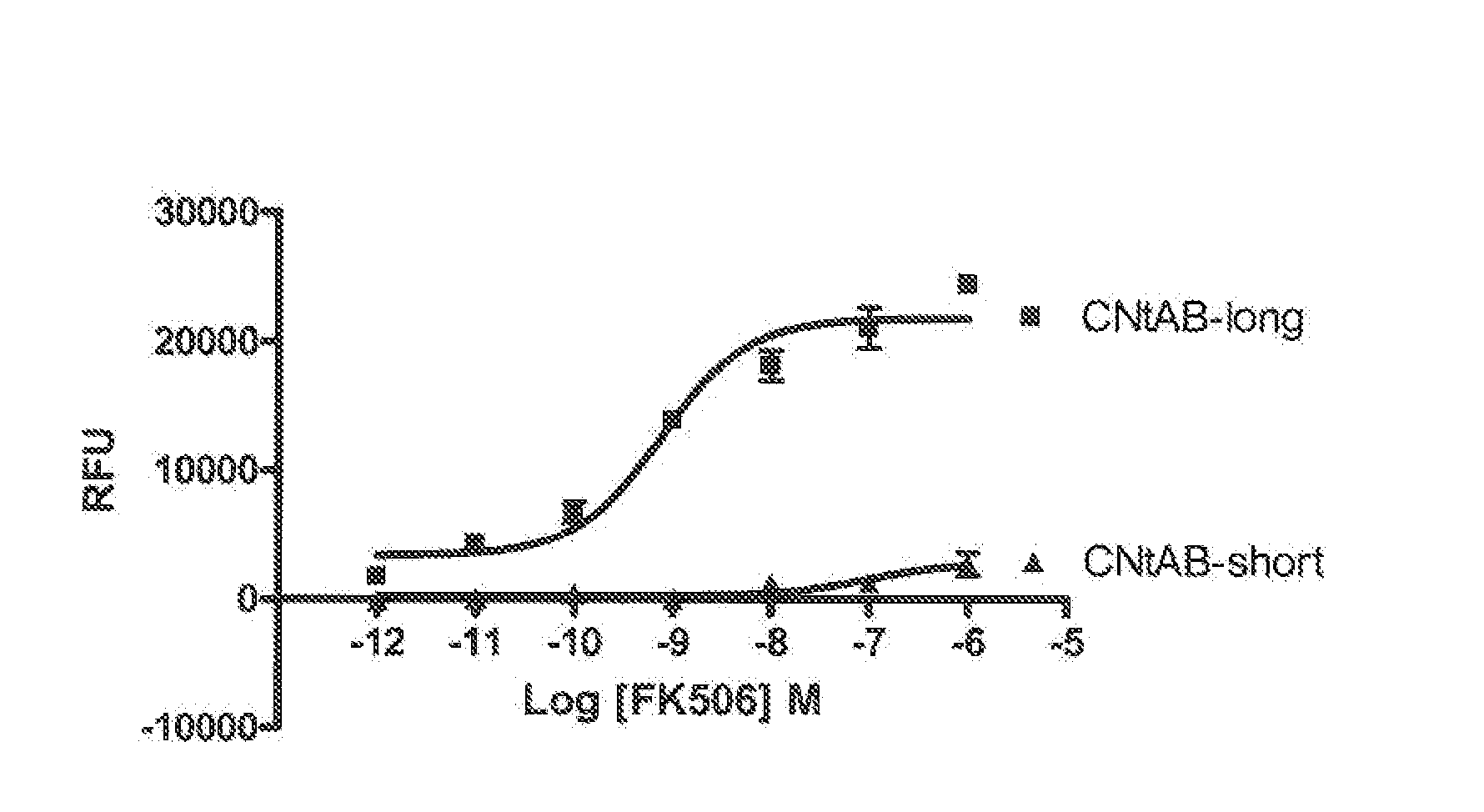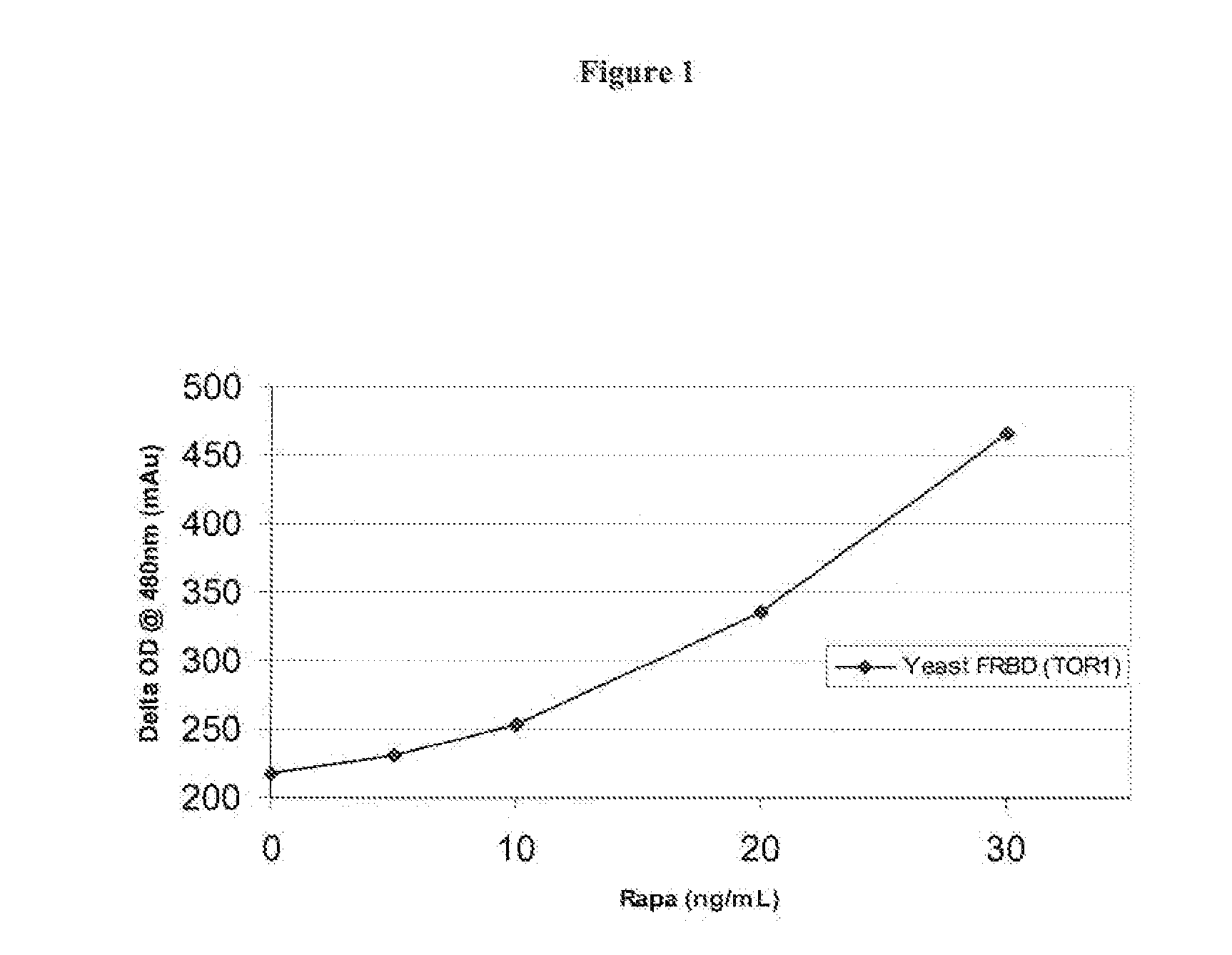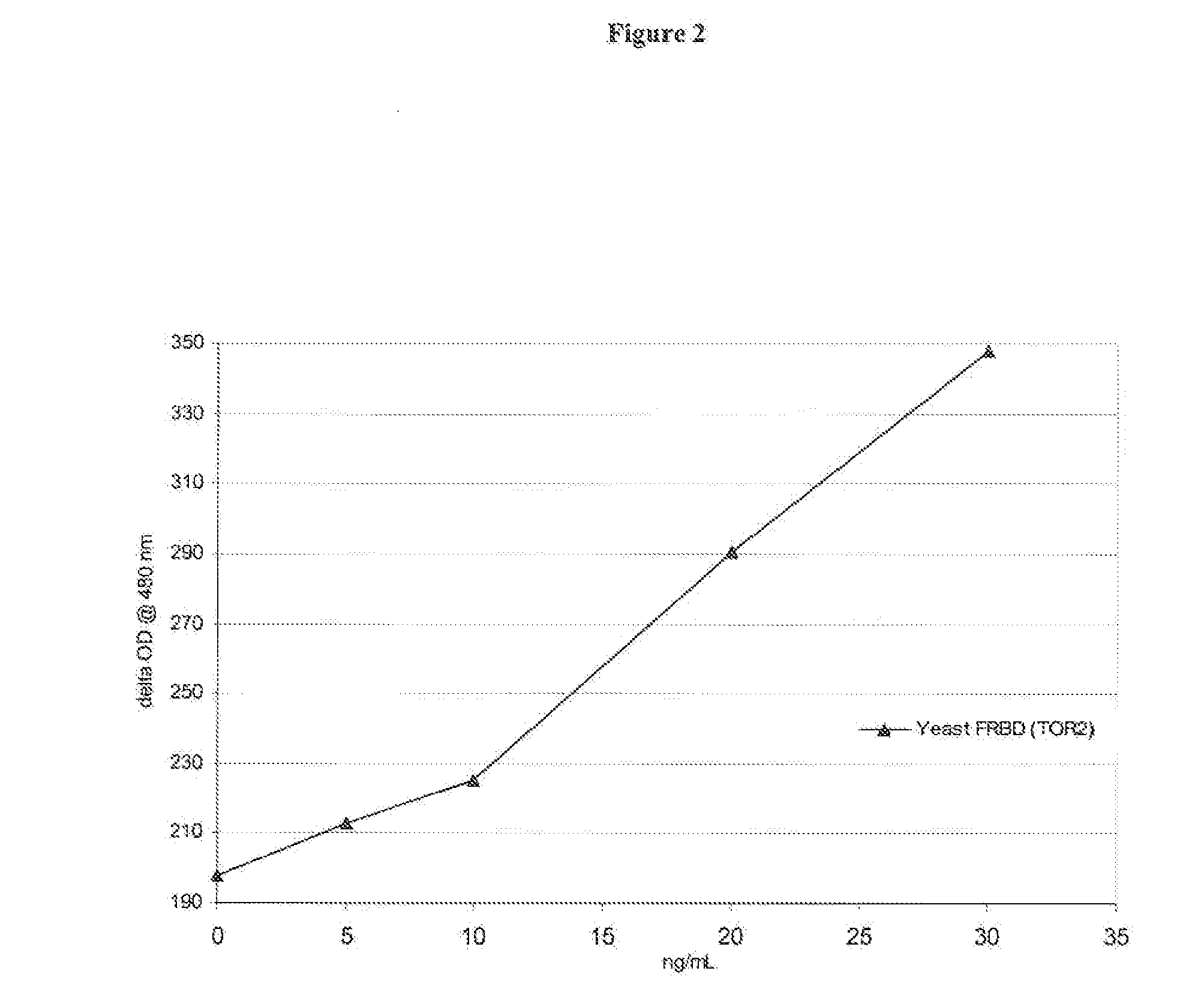Homogeneous double receptor agglutination assay for immunosuppressant drugs
a double receptor and immunosuppressant technology, applied in the field of therapeutic drug monitoring, can solve the problems of undesirable positive bias in immunoassays, no further studies reported, and poor expression level of 97 kda sccn
- Summary
- Abstract
- Description
- Claims
- Application Information
AI Technical Summary
Problems solved by technology
Method used
Image
Examples
specific embodiments
Example 1
Synthesis of cDNA Encoding yTOR1 FRBD and yTOR2 FRBD
[0074]The cDNAs encoding the 90-amino acid FKBP12 rapamycin binding domains (FRBD) of yeast TOR1 and TOR2 were chemically synthesized by Blue Heron Biotechnology (Seattle, Wash.) with the following optimized nucleotide acid sequence:
SEQ ID NO: 1 (yTOR1 FRBD):5′ GAACTTTGGTATGAAGGACTCGAAGATGCATCTCGCCAATTTTTTGTTGAACACAATATCGAAAAAATGTTTTCTACACTTGAACCCTTACACAAACACCTTGGAAATGAACCACAAACCCTCTCTGAAGTCTCCTTTCAAAAATCCTTTGGCCGTGACCTTAACGACGCATATGAATGGCTTAACAACTACAAAAAATCTAAAGATATTAATAACCTGAATCAAGCATGGGACATCTATTACAACGTATTTCGCAAAATTACTCGTCAA 3′SEQ ID NO: 2 (yTOR2 FRBD):5′ GAACAATGGTATGAAGGCCTGGATGATGCCTCTCGTCAATTCTTTGGTGAACACAATACAGAAAAAATGTTTGCAGCGCTCGAACCCTTATATGAAATGTTAAAACGTGGTCCAGAAACTTTACGGGAAATTTCTTTTCAAAATTCTTTTGGTCGTGATCTCAATGATGCCTATGAATGGTTAATGAATTATAAAAAAAGCAAAGATGTTAGCAACCTTAATCAAGCCTGGGATATTTACTATAACGTATTTCGCAAAATCGGTAAACAG 3′
example 2
Construction of Expression Vectors
[0075]The synthetic cDNAs, along with two sets of oligonucleotide primers, were used to PCR-amplify approximately 300-bp DNA fragments, corresponding to yTOR1 FRBD and yTOR2 FRBD, and these DNA fragments were cloned into expression vector pIVEX2.7d or pIVEX2.8d (Roche Diagnostics GmbH, Germany). The resulting plasmids, confirmed by DNA sequencing, can express AviTagged target proteins that are not only able to bind rapamycin-bound FKBP12 but also to be specifically biotin-labeled at the unique lysine residue by biotin ligase BirA.
SEQ ID NO: 3 (forward primer for yTOR1 FRBD):5′ CTTTAAGAAGGAGATATACCATGGAACTTTGGTATGAAGGACTC 3′SEQ ID NO: 4 (reverse primer for yTOR1 FRBD):5′ AAGATGTCGTTCAGGCCCCCTTGACGAGTAATTTTGCGAAA 3′SEQ ID NO: 5 (forward primer for yTOR2 FRBD):5′ CGCTTAATTAAACATATGACCGAACAATGGTATGAAGGCCTG 3′SEQ ID NO: 6 (reverse primer for yTOR2 FRBD):5′ TTAGTTAGTTACCGGATCCCTTACTGTTTACCGATTTTGCGAAA 3′
example 3
Production of Biotinylated yTOR1 FRBD and Biotinylated yTOR2 FRBD in E. coli
[0076]After selection using the cell-free Rapid Translation System (RTS) from Roche Diagnostics Corporation, the optimal expression constructs were transformed into BL21-A1 cells, along with BirA expression vector, and induced in the presence of 50 μM biotin, 0.2% arabinose and 0.2 mM isopropyl β-D-thiogalactopyranoside (IPTG) at 30° C. for 16 hours. The expressed recombinant proteins were purified to a purity of approximately 90% through the modified avidin beads and size exclusion chromatography.
[0077]Following is the amino acid sequence for recombinant yTOR1 FRBD (106 amino acids). Lys 101 is the specific site for BirA-dependent biotin labeling. This protein binds to rapamycin at the FKBP12 binding site. The AviTag sequence is indicated by bold type, and Lys 101 (K) is the specific site for BirA-dependent biotin labeling.
SEQ ID NO: 7 (AviTagged yTOR1 FRBD):1 10 20 30 40 ...
PUM
 Login to View More
Login to View More Abstract
Description
Claims
Application Information
 Login to View More
Login to View More - R&D
- Intellectual Property
- Life Sciences
- Materials
- Tech Scout
- Unparalleled Data Quality
- Higher Quality Content
- 60% Fewer Hallucinations
Browse by: Latest US Patents, China's latest patents, Technical Efficacy Thesaurus, Application Domain, Technology Topic, Popular Technical Reports.
© 2025 PatSnap. All rights reserved.Legal|Privacy policy|Modern Slavery Act Transparency Statement|Sitemap|About US| Contact US: help@patsnap.com



